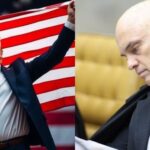
La Izquierda Diario consulted specialists Leopoldo Tornarolli and Agustín Arakaki on the relationship between government policies and the social situation, on the impact of Milei’s measures and the crises caused by the parties that preceded him in power.
Leopoldo Tornarolli He is Senior Researcher at the Center for Distributive, Labor and Social Studies (CEDLAS) of the National University of La Plata (UNLP) in Argentina. Tornarolli has a Master’s degree in Economics from UNLP. He is a professor of Economic Policy I at UNLP. He has published articles on poverty, income distribution and aspects of the labor market.
Agustín Arakaki He has a Master’s degree in Economics (UBA) and a degree in Economics from the University of Buenos Aires (UBA). He is currently a visiting researcher at the Center for Studies on Population, Employment and Development (CEPED) of the Economic Research Institute of the UBA. He specializes in issues linked to the productive structure, the labor market and poverty.
Interview with Leopoldo Tornarolli
How do the measures of the Milei plan impact the poverty rate?
Leopoldo Tornarolli (LP): I don’t know if you are referring to any particular policy, but I think they are government policies rather than IMF policies. I mean, I don’t think that the magnitudes of deficit reduction, exchange rate levels and so on, and the time path to achieve them have been decided by the IMF, but by the government. Even less are the policies to achieve this and the accompanying policies to soften the social impacts.
Regarding government policies, then, the short-term impacts on poverty come from two sides: the reduction in purchasing power and the level of employment. Regarding the first, more or less we are already seeing evidence: a trend that has been going on for more or less a year and a half is accelerating and deepening, income from almost all sources (wage earners registered or not, self-employed workers, transfers from the State) tends to lose with inflation and with this the purchasing power of income is eroded and indigence and poverty increase.
It is possible that this impact mentioned in the previous paragraph will not be equally strong in all homes. In the most vulnerable households with minors, the doubling of AUH and Alimentar that occurred in December may have somewhat lessened the impact, but in any case it is a sector with high levels of poverty and that is not going to change much. Income from informal employment may have received a very strong impact in the first months of the year, and may not show an improvement until the economy is reactivated. Formal income, for its part, will show a lot of heterogeneity, depending on the sector and the parities they have reached. Retirees and pensioners, a group with a relatively low level of poverty, suffered a sharp drop in purchasing power. Although they will continue to be the group with the least poverty, I hope they will be the group where poverty increases the most in the next measurement.
In relation to the level of employment, for now we do not have a complete picture, until the next INDEC publication, but it is likely that the employment rate will fall and unemployment will increase. However, I don’t expect it to be a very sharp jump. I think that the main effect here is going to be a change in the composition of employment, to the extent that those who lose employment in the formal sector are going to be informal salaried or self-employed, doing low-productivity jobs/jobs, but they need to at least face the situation of these months. Obviously, this will also translate into lower labor income and greater poverty.
In relation to the medium-term effects, they will depend on whether the government’s macro strategy is successful or not. If they manage to sustainably lower inflation, the fall in activity will find a floor and will begin to reactivate after a couple of months of reaching that point (if successful, I think it should begin to be seen before the end of the year). . I do not see a very accelerated recovery, but it could still bear fruit in terms of poverty if inflation maintains a decreasing path, to the extent that this would allow us to partially recover the purchasing power that has been decreasing since the end of 2022 and, particularly, at the beginning of 2024.
Logically, if the strategy is not successful, activity will continue to fall or remain at a very low level and poverty will remain at high levels.
Do you think that after the last debt crises, the way out of them includes a worsening of social indicators?
LP: In general, macroeconomic crises, whether debt or not, leave a higher poverty floor, which ends up manifesting in higher levels of poverty than those that existed before the crisis even if the previous level of per capita product is recovered. to the crisis. This has happened several times in our country.
The explanation for this has largely to do with the microeconomic effects of macro crises. For example, you will have more children who grow up in worse conditions (they eat worse, receive less health care, miss more school, receive less attention from parents, etc.) which results in worse possibilities of future integration in the labor market. Also at present, to face the crisis, many households get rid of productive assets (they sell an oven with which they made empanadas to sell, tools they used to work, etc.) and when the economy recovers they are in worse conditions to take advantage of that recovery.
In any case, it is not an iron law that a macro crisis always leaves a floor of poverty that can no longer be pierced. What happens is that after recovering from the crisis it is necessary to sustain a growth path for several years and in that Argentina has not been successful at all.
Interview with Agustín Arakaki
-How do you see the evolution of poverty in the last 10 years?
Agustín Arakaki (AA): In the last decade, the performance was negative, beyond some relative improvement that could be observed at some point, such as in 2017 or 2021. The most immediate causes of this negative performance are known: an economy that does not grow (this means that it decreases in per capita terms), that does not generate quality employment, and with high and growing inflation.
-There is a structural poverty floor that used to be around 25%, do you think the floor is higher now? If so, what were the causes and what would be the new floor?
AA: It is difficult to define “structural” poverty. Or, rather, it is difficult to grasp it. Basically because it refers to the idea of persistence over time – that is, of a population that does not manage to escape the situation of poverty – but there is no source of information that allows this monitoring over time. With the information we have, we see that the 35% floor has not been broken for 5 years and that leads us to think that the group of people who persistently find themselves in that situation has also increased. As I said before, the difficult thing is to define what portion of that 35% is structural.
On the other hand, it could be argued that a second condition must be added to the definition of “structural poverty” which is that these people cannot escape poverty in a “positive context”, which, at a minimum, requires that the economy grow. . Now, although economic growth is a necessary condition, it is not sufficient. It will depend on what the drivers of that growth are. The measures adopted so far by the government do not suggest that they are thinking about growth that favors workers, retirees and beneficiaries of social programs.
Source: www.laizquierdadiario.com

